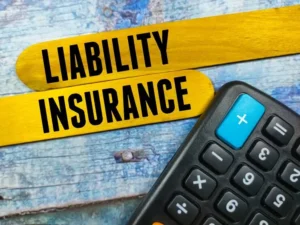Table of Contents
Car insurance is one of those important features to have for the owner and the operation of a car. Not only does it help in covering you against financial losses in case of accidents; all the same, it allows you to be compliant with the requirements by the law. Despite its importance, many people find car insurance policies to be complicated and confusing. This guide will try to shed some light on car insurance by breaking down its components and offering practical tips.
Whether you are a new driver or you just want to change your current coverage, knowing the details about car insurance can help you make right choices and maybe even save some money. Car Insurance
Car insurance can get pretty complicated, but mastering some of the simple things will be able to make quite a difference and save your time and money. To begin with, car insurance is an inseparable part of car ownership or operation. It protects you from financial losses in case of accidents and helps you stay compliant with the law.
Despite the importance of car insurance policies, to most people they are very complex and generally overwhelming. This guide is important in simplifying car insurance: breaking down its components and offering practical tips. It shall help both new drivers and those seeking to update their current policy understand the ins and outs that come with car insurance and, as such, make informed decisions and even save some money.
The Basics of Car Insurance: What It Is and Why You Need It
Car insurance is a type of policy between you and an insurance company which provides protection against financial losses when physical damages, bodily injuries, and liability are involved in a traffic collision, plus other incidents. In other words, it shifts the risk of financial loss from yourself to the insurance company.
First of all, car insurance is not only a good idea, but it is mostly required in any state. Failing to have it could lead to serious fines, suspension of license, and even some kind of legal action against you being taken. More than that, car insurance gives peace of mind, knowing that in case of an unforeseen event, you are well-covered.
Understanding the different types of auto insurance coverage will help in selecting the right policy. Each kind of coverage has been designed for a specific purpose; that way, you are covered under different conditions. Liability is, perhaps, the most common required by most states and will cover all the injuries and damages caused to another person in an accident.
Collision coverage, however, pays to repair your vehicle in case of a collision with another car or object. Comprehensive coverage extends protection to incidents unrelated to collision, such as theft, vandalism, or natural disasters. Personal Injury Protection pays for medical expenses and lost wages for you and your passengers, no matter who is at fault.
Lastly, Uninsured/Underinsured Motorist Coverage will cover you in case of an accident with another driver who does not have sufficient insurance. Knowing all these types of coverage will help you tailor your car insurance policy according to your needs and provide full protection.
Types of Car Insurance Coverage Explained
There are numerous types of coverage for car insurance, each serving a particular purpose:
1. Liability Coverage: This covers the injuries and damages you cause to other people in an accident.
2. Collision Coverage: Collision coverage pays to repair your vehicle for damage caused by collision with another vehicle or object.
3. Comprehensive Coverage: Comprehensive pays for damage to your vehicle not caused by a collision-for example, theft, vandalism, fire, flood, etc.
Personal Injury Protection (PIP): PIP pays for your medical expenses and lost income and that of your passengers, regardless of who is at fault.
Uninsured/Underinsured Motorist Coverage: Covers you in the event of an accident caused by someone who is either uninsured or underinsured.
Factors Affecting Your Car Insurance Premium
A number of different things your insurance premium is based on includes:
- Driving Record: An accident-and-infraction-free driving record tends to reduce your premium, whereas infractions and accidents raise it.
- Age and Gender: Usually, male drivers under the age of 25 pay a higher premium owing to high factors of risk.
- Vehicle Type: The make, model, and year of your vehicle will determine what you pay for your premium. Generally speaking, higher-value and high-performance vehicles have higher premiums.
- Location: Where you live comes into play with your premium rate. Larger cities, of course, have more traffic and crime, which increases your premium.
- Credit Score: In some states, it is legal for an insurance company to use your credit score to determine your premium. Generally, the better your credit score, the lower your rate will be.
How to Find the Right Car Insurance Policy
Finding the right car insurance policy is not all about the policy’s price. Given below are some tips which will help in finding the perfect policy for self.
- Comparison of Quotes: Get quotes from a number of different insurance companies to compare the coverage and prices they offer.
- Company’s Reputation: Check for customer reviews and ratings for proof that the company is reliable enough in handling claims and providing customer service.
- Understand the coverage: Know what each section of your policy covers and whether or not that section is one you need.
- Inquire about discounts: Most companies will grant you a discount if you have a good driving history, hold multiple policies with them, or your vehicle has specific safety features installed on it.
- Review and revise regularly: Every so often, revisit your policy to reevaluate what you need and see if you qualify for any new discounts.
Filing a Claim After a Car Accident: What to Do
If you have been involved in a car accident, knowing how to make a claim helps ease the process:
- Check for Injuries: First, check whether anyone is injured and move, if possible, to a safer location.
- Call the Police: Police and Accident Report The police need to be informed of the accident, and a police report obtained.
- Information Gathering: Share with other driver(s) involved in the incident the information like name, contact numbers, and insurance information.
- Documentation of the Accident: Take photos of the accident scene, vehicle damages, and personal injuries.
- Contact Your Insurance Company: Notify your insurance company as soon as possible. Report the accident involved and initiate the claim process.
- Stay in Touch: Keep in close contact with your insurance company about the status of your claim and any additional information that may be required.
How to Save Money on Your Car Insurance
You can save money on your car insurance premium without reducing the coverages on your policy. Here are some ways to cut your premium:
- Increase Your Deductible: A higher deductible will reduce your premium, but be sure you can afford the out-of-pocket cost when filing a claim.
- Bundle Policies: Most insurance carriers offer some form of discount if you bundle multiple policies, such as home and auto insurance.
- Ask About Discounts: Many people do not take advantage of discounts for good driving, good grades, military, and many others.
- Maintain a very good credit score: In states where credit scores apply, the better it is, the lower your premiums will be.
- Review Your Coverage Periodically: Go through your policy from time to time to ensure that you are not paying on coverage that you don’t need.
Conclusion
Understanding auto insurance is vital to every driver. You will definitely make competent decisions that will protect you both financially and legally by learning the fundamental concepts, the different types of coverage, and the influencing factors on the premiums.
All the same, the best car insurance for you will be one that would suit your needs and your budget. Keep your policy and quotes in your sight from time to time, and get all the discounts available to assure the best value for money.
Understanding auto insurance is the key for any driver, and once you understand the basics, the differing types of coverage, and other influences on premiums, you’ll be able to make informed decisions that protect your finances and also ensure legality.
That said, it is important to choose an appropriate car insurance policy that would fit your needs and budget. Then, regular reviews of your policy, comparing quotes, and making use of available discounts will get the best value for your investment.
Frequently Asked Questions
- What is the minimum amount of legally required car insurance?
Most states require liability insurance, but the required minimums vary. This is a good time to check your state’s requirements and make sure you have enough coverage.
- Am I covered to operate another person’s car if I have insurance?
Generally, your auto insurance follows the vehicle instead of the driver. However, you will want to check with both your insurance company and the owner’s policy for confirmation.
- How often should I review my car insurance policy?
It would be best if you reviewed it annually or when you go through some significant life changes: purchasing a new vehicle, moving, or getting married.









